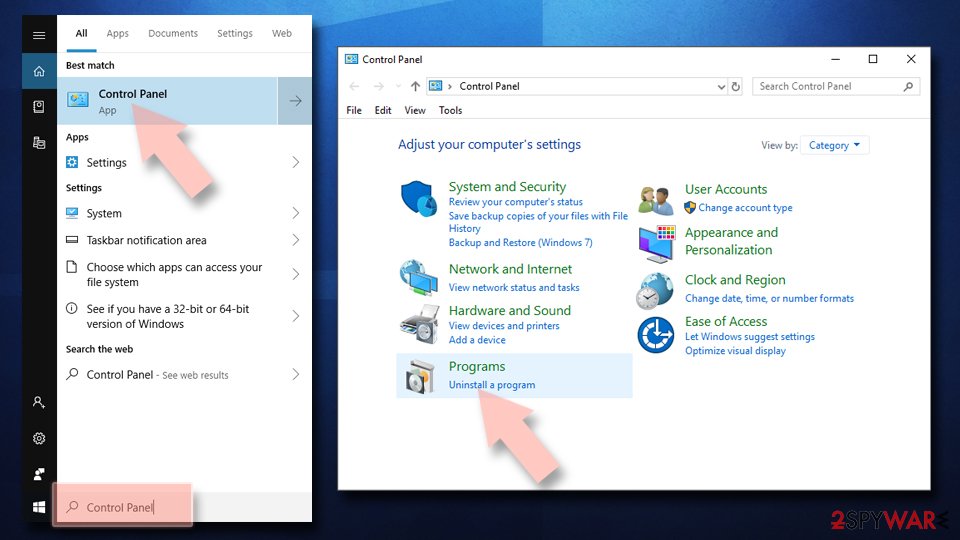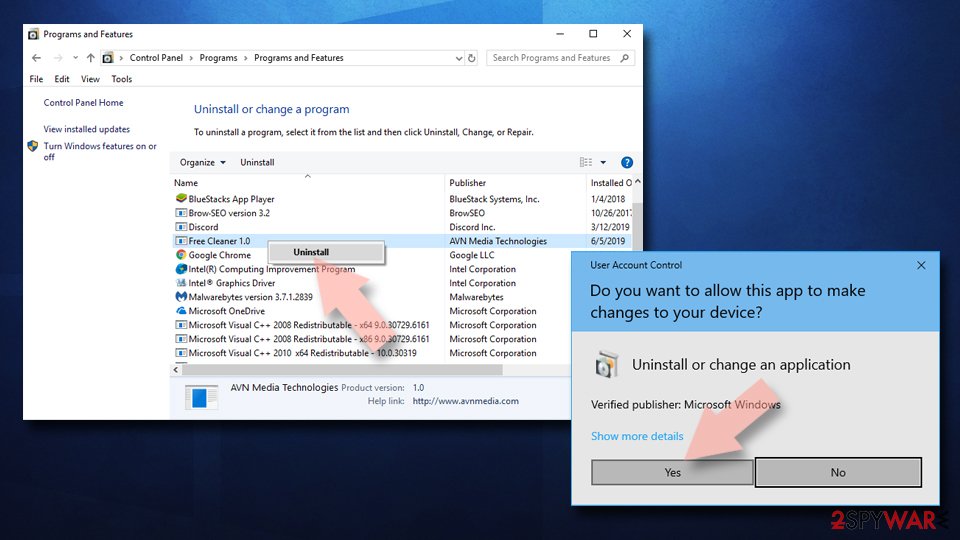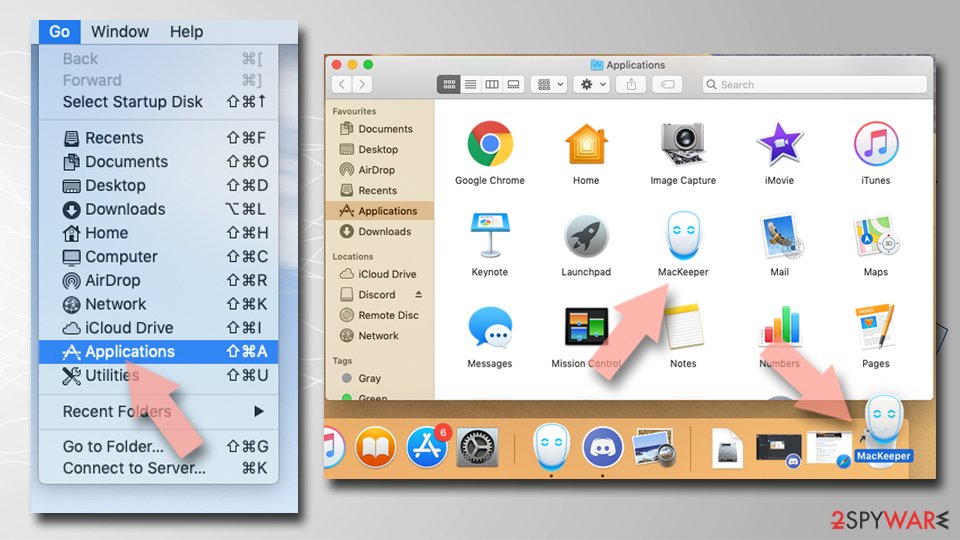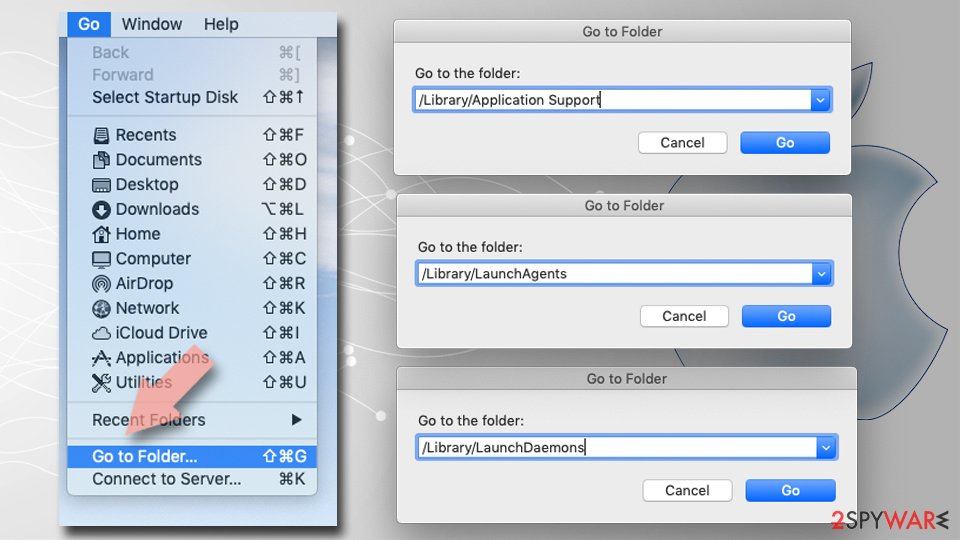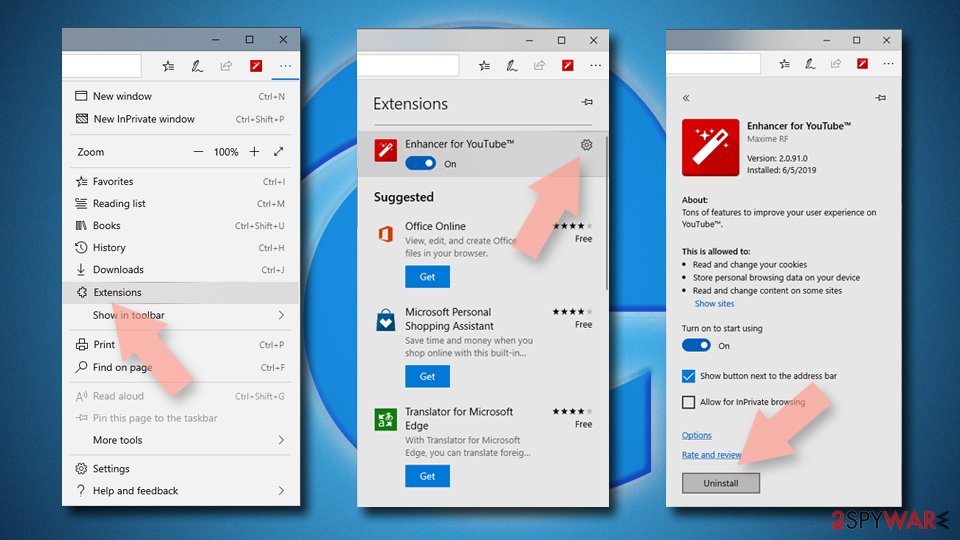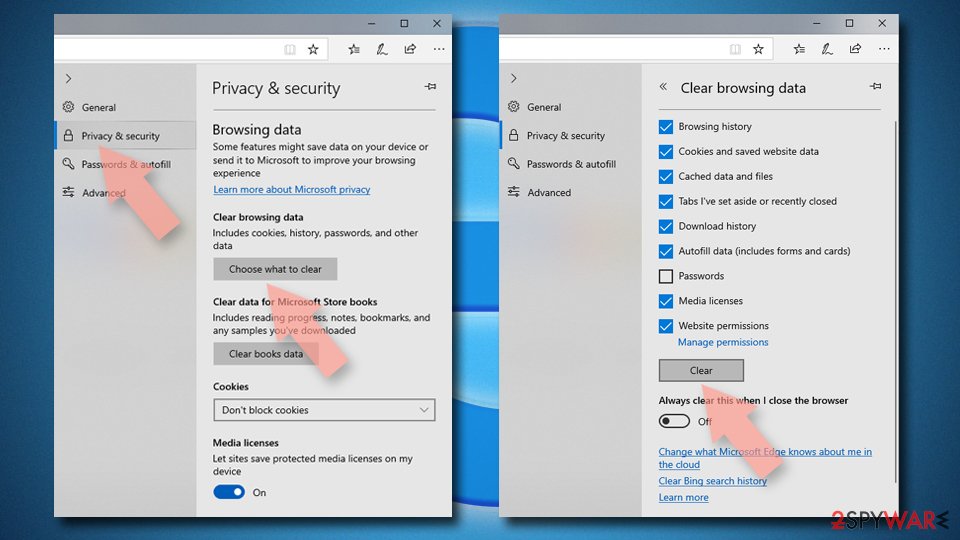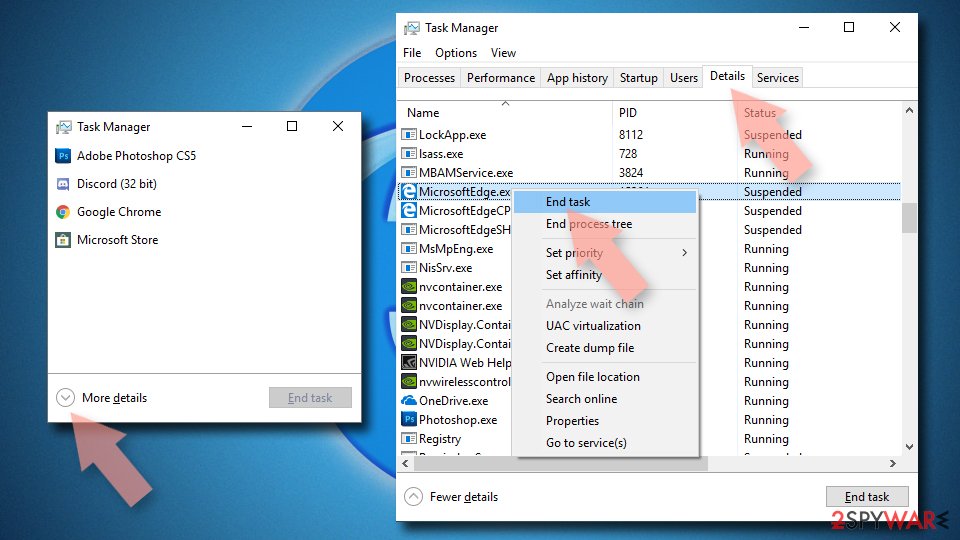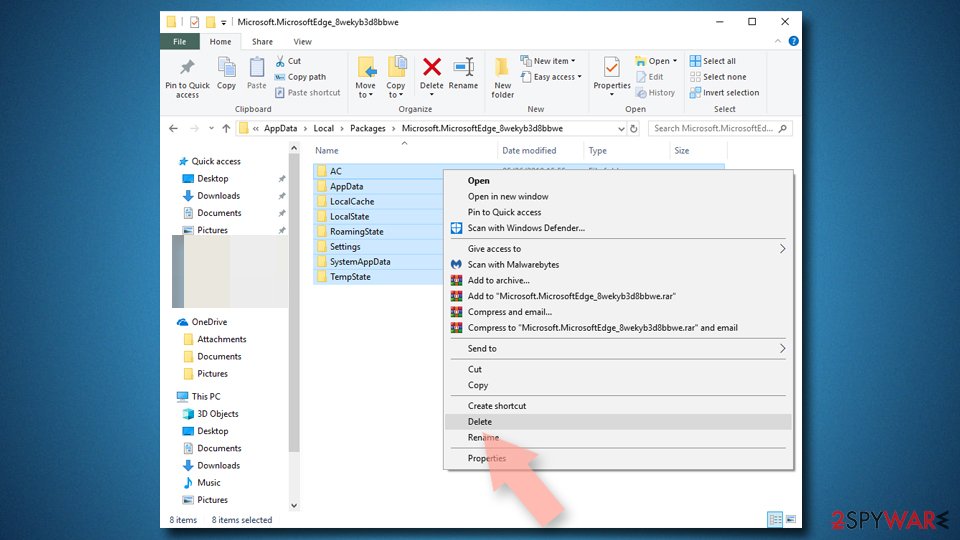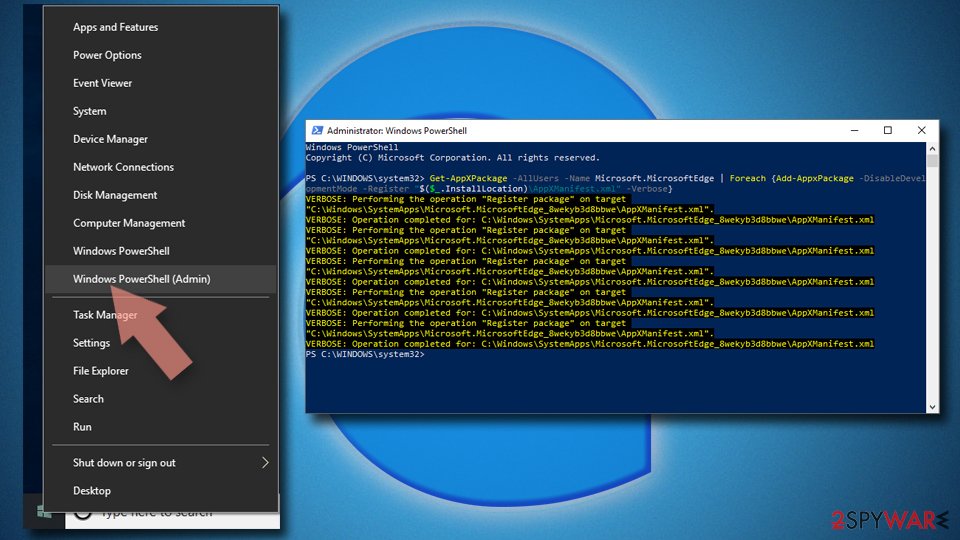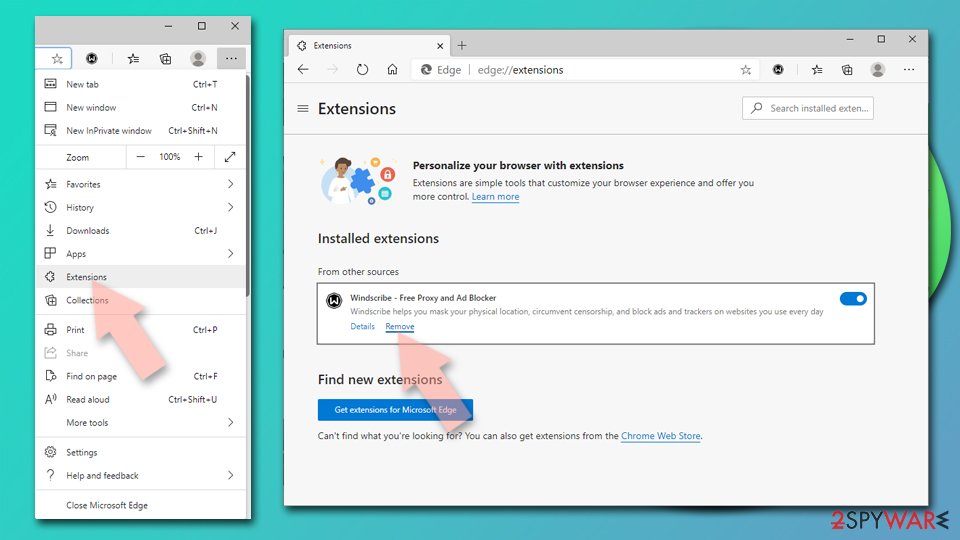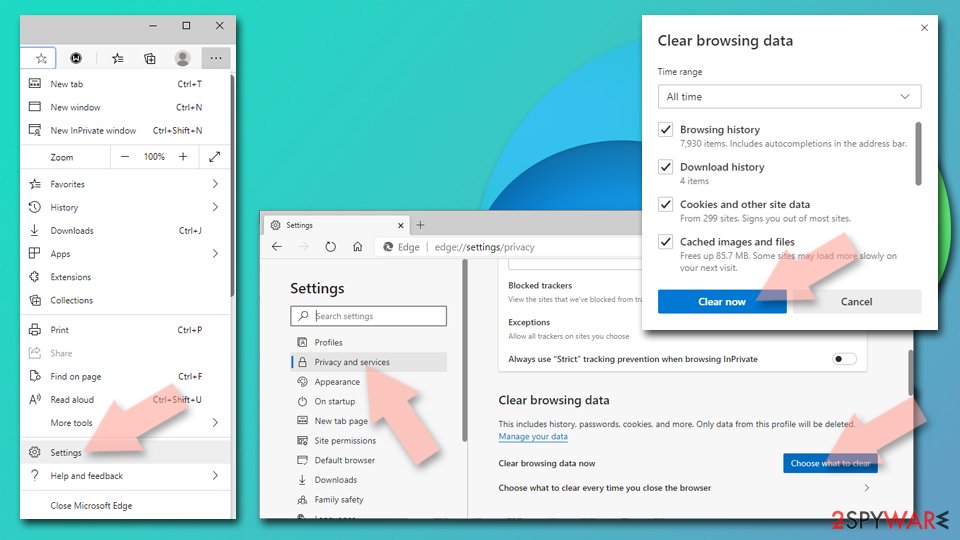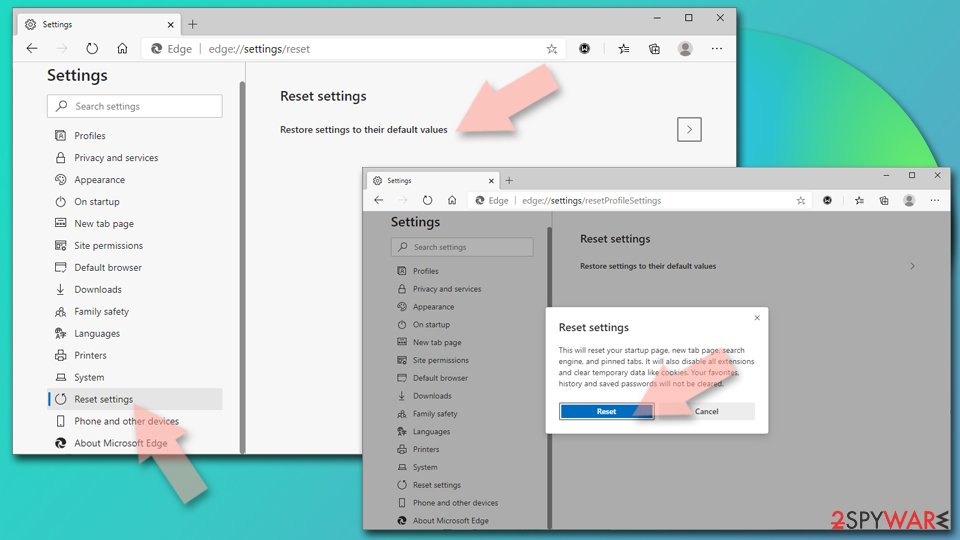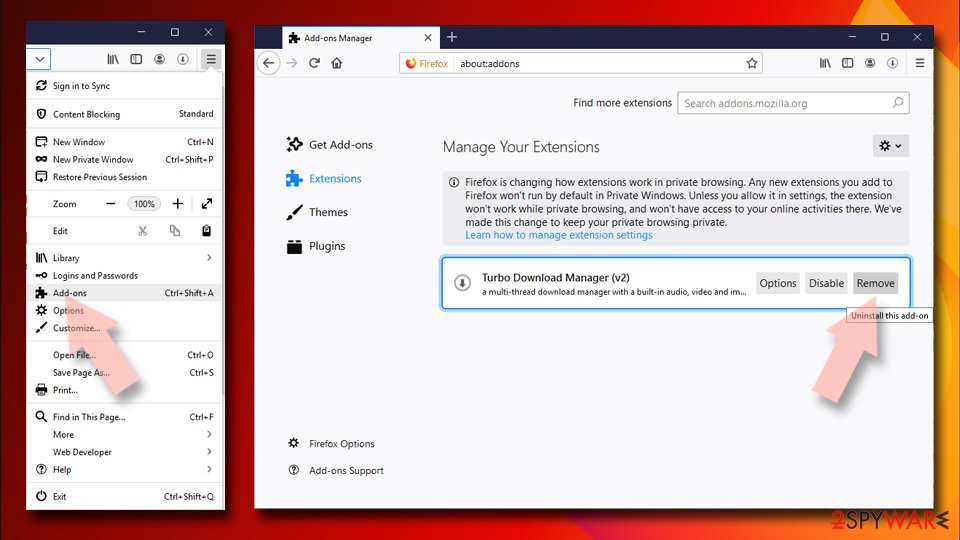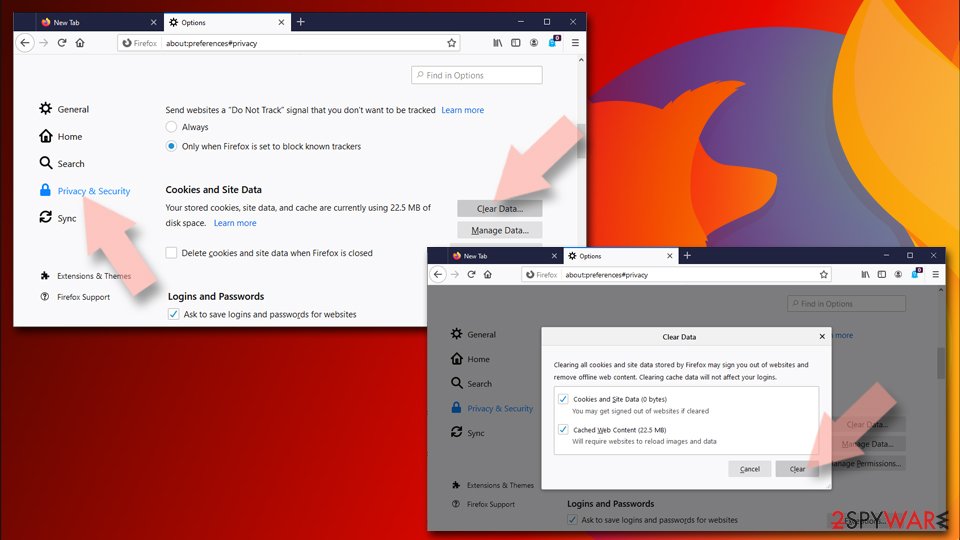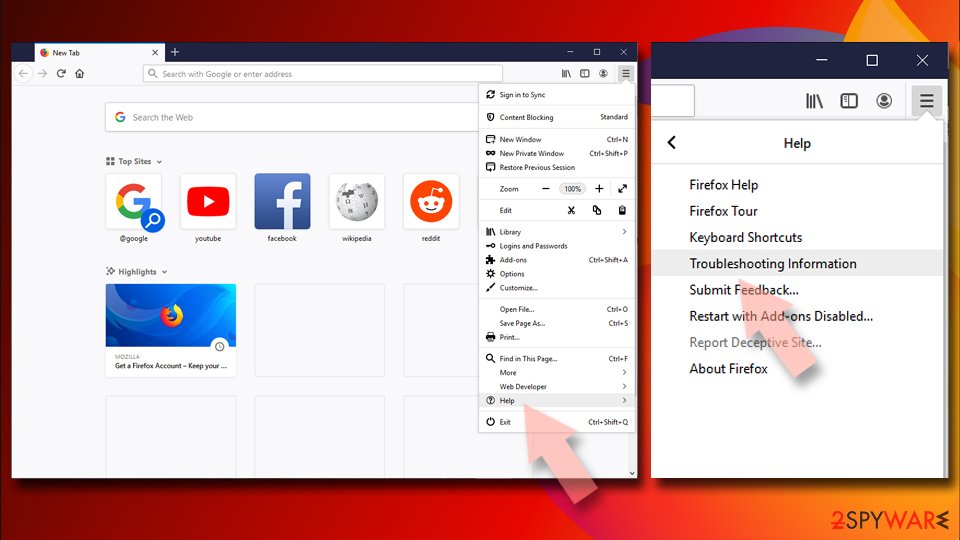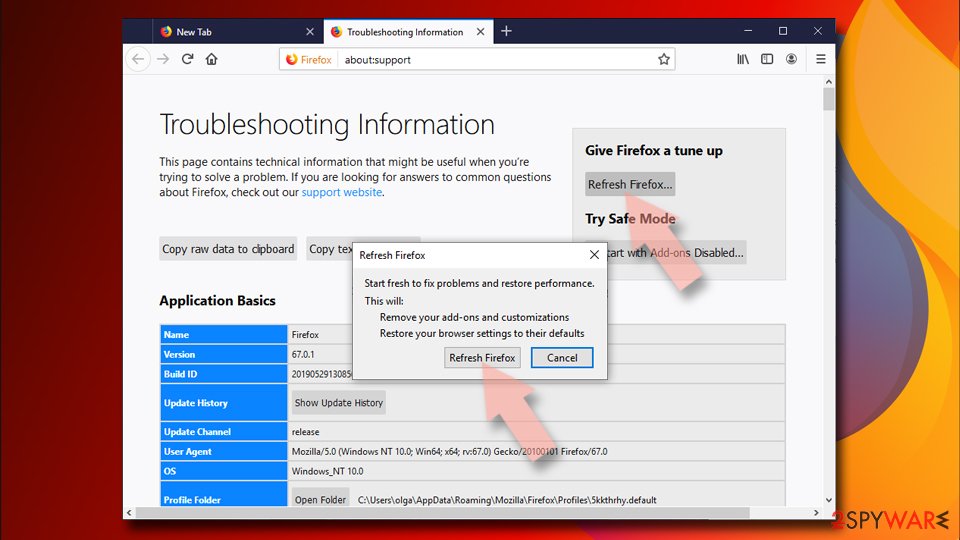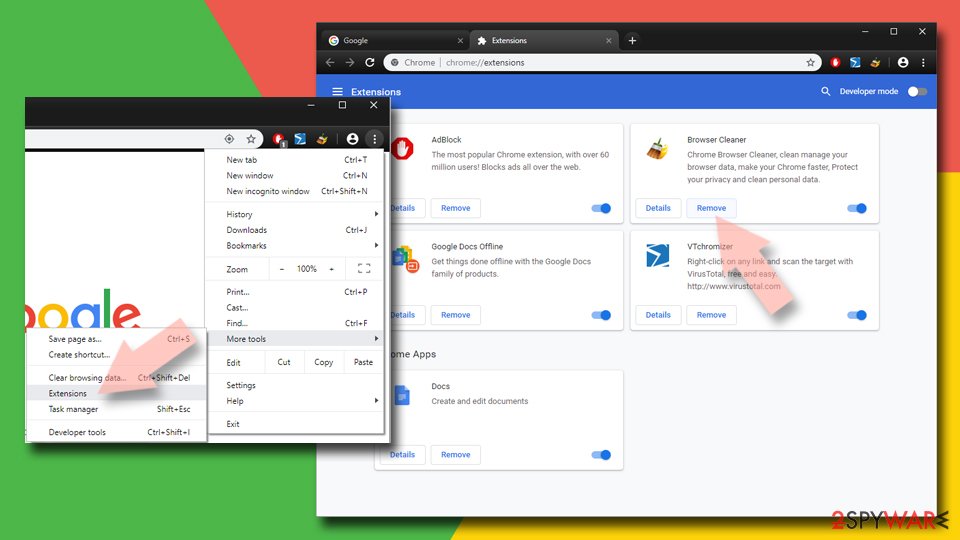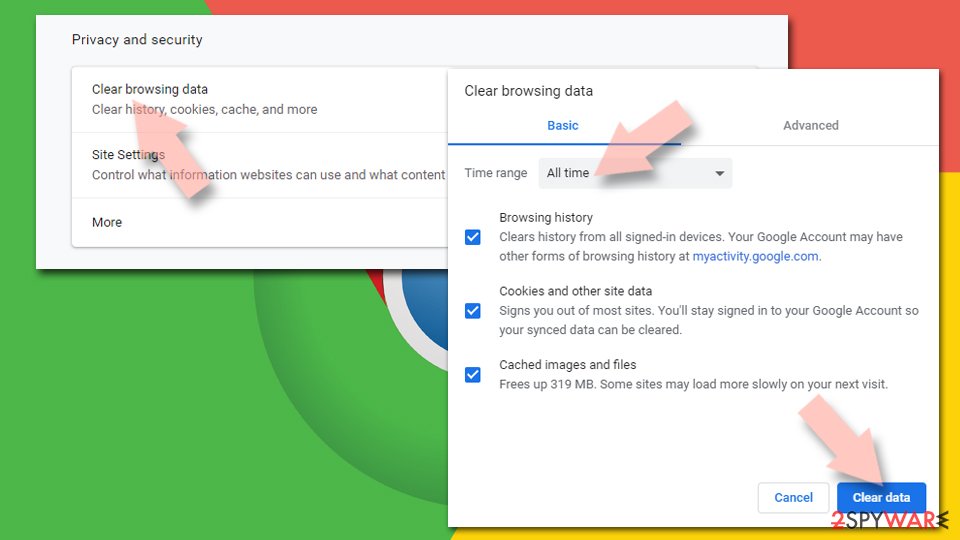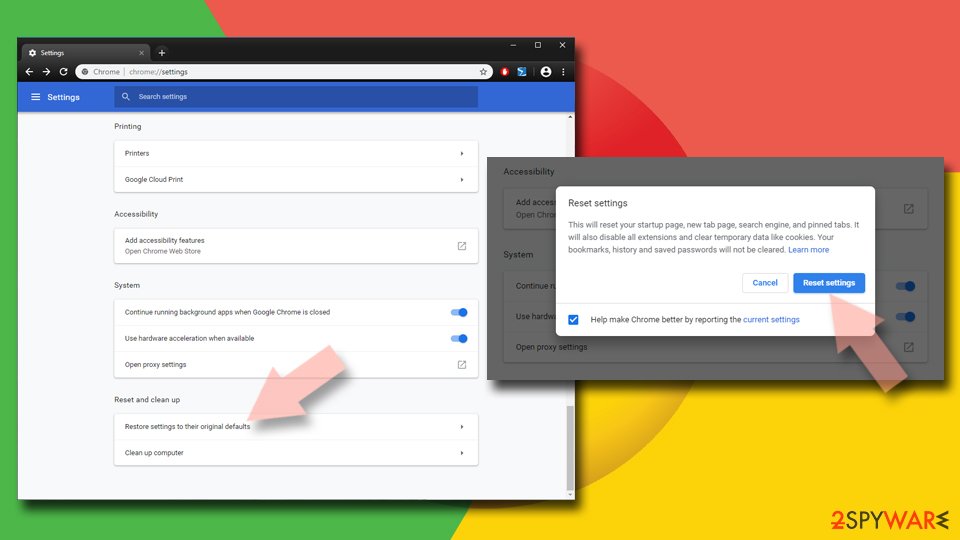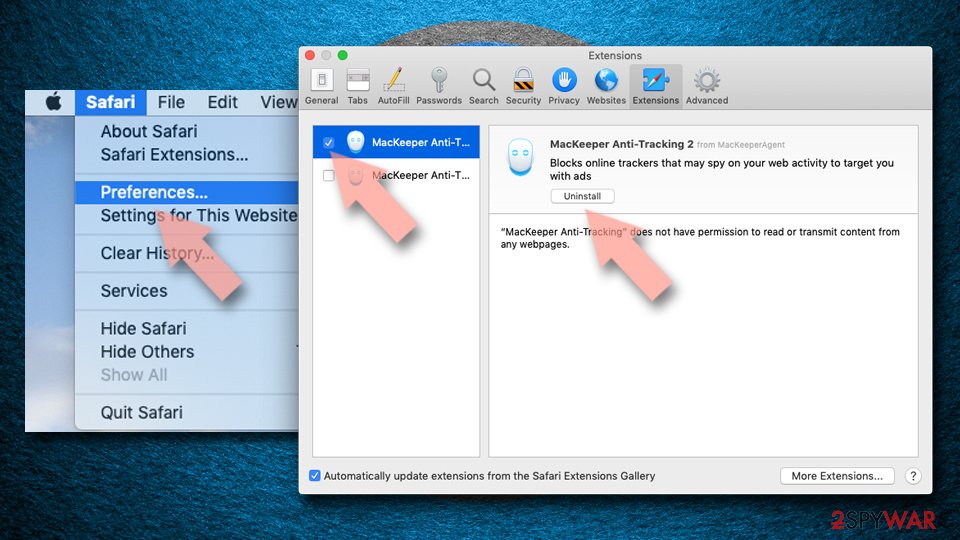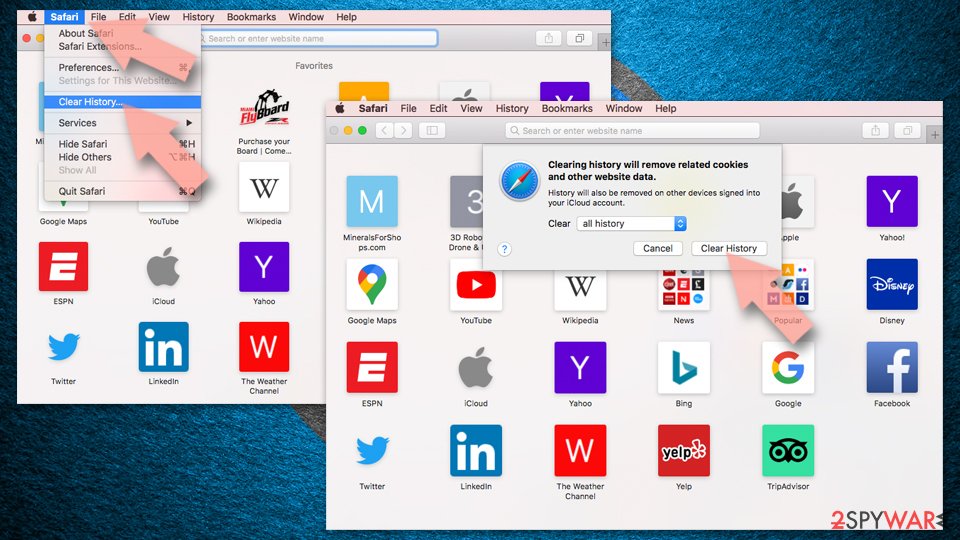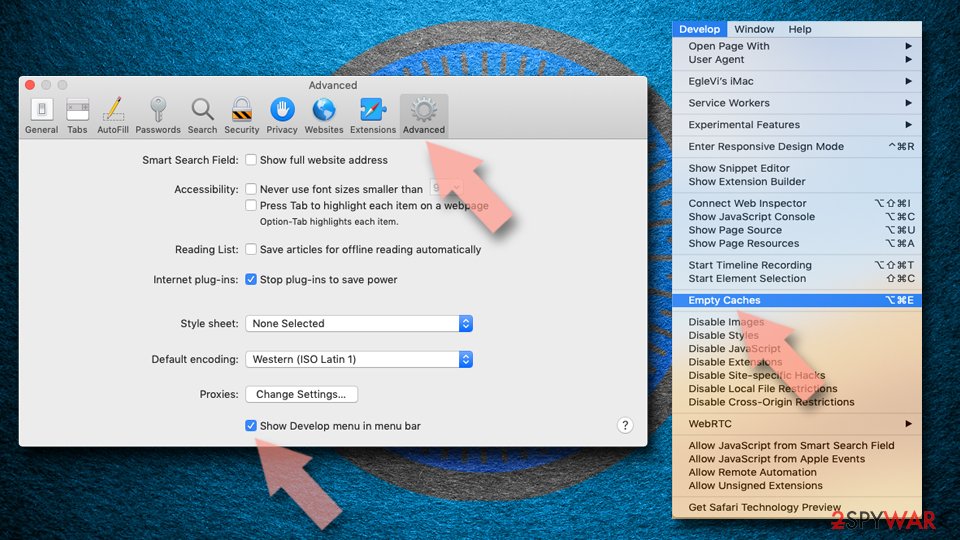Adblocker for YouTube (Removal Guide) - updated Oct 2020
Adblocker for YouTube Removal Guide
What is Adblocker for YouTube?
AdBlocker for YouTube – an extension that might change your browser settings without warning
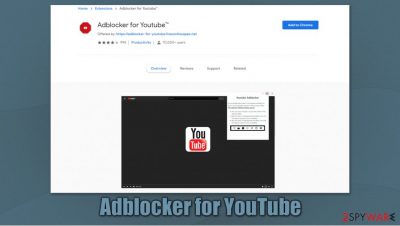
Adblocker For YouTube is one of many extensions offered for users to stop ads from being displayed. This particular one is designed to stop the intrusive advertisements that are shown during YouTube watching sessions. The add-on can be found in Chrome and Firefox web stores, although it is not uncommon to discover it after installing freeware apps downloaded from third-party sources, as it can be spread via software bundles.
While Adblocker For YouTube seems like a useful extension, there are many suspicious features that it holds. First of all, users complained that commercials still pop up, despite it being installed correctly. Furthermore, the main concern arises when it adds itself to the exclusion category of Windows Defender‘s scanning list. The app also has gone rogue, as users started to complain about unexpected browser redirects to search.grilime.com.[1] Due to these features, virus researchers categorize it as adware[2].
| Name | Adblocker For YouTube |
| Type | Browser extension, ad-blocker, adware |
| Distribution | Software bundle packages, official Chrome/Firefox stores |
| Symptoms | Advertisements show up on most visited websites; unexpected redirects to Bing or other search providers; changed homepage and new tab address |
| Removal | You can eliminate the extension by accessing your web browser settings. It is also recommended to check the system for other PUPs, as well as malware – do it manually as per instructions below or scan the system with security software |
| Additional steps | In case you found other potentially unwanted or malicious programs on your system, your computer might begin acting abnormally, e.g., stat crashing, throwing errors, or similar. You can attempt to fix such problems automatically with FortectIntego |
It is not a secret that some apps are better than others in their particular field. Ad-blockers are generally useful additions to web browsers, as they can prevent JavaScript from executing malicious scripts, hindering automatic malware infections. Not to mention that they improve web browsing experience from users' point of view.
However, some ad-blocking apps are simply bad – they instead inject ads, connect to unknown servers, redirect traffic, or even act as malware. Unfortunately, the so-called Adblocker For YouTube virus has caused many users troubles instead of helping them.
Many similar apps attempt to slip into users' machines with the pretext of blocking ads. Here are a few examples:
Besides, security researchers also spotted fake ad-blockers being distributed to thousands of users. For this reason, picking a correct program is crucial, as it may otherwise result in privacy issues, malware infections, or monetary losses. Thus, we recommend you remove Adblocker For YouTube as soon as possible.
Regularly popping advertisements and commercials in YouTube videos surely remain a pain in the neck. Depending on the duration of the original video, such pop-ups emerge quite frequently[3]. Responding to the needs of the virtual community, the developers present two versions of the program – for Mozilla Firefox[4] and Chrome browsers. It is promoted as a secure extension which grants you the privilege of watching YouTube videos without irritating commercials.
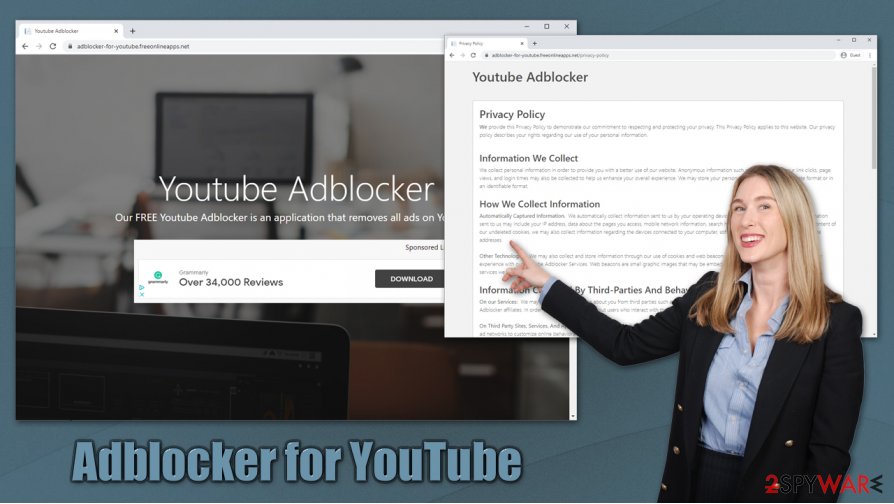
Even though the ratings of both extensions suggest of the effectiveness of the program, user reviews reveal an alternative truth. Some of the users got disappointed after finding out that it fails its mission as an ad-blocking app. In the review, it notes that it does not collect any browsing data about users. Contradictory, when you are about to enable the extension, it alerts users that the extension is capable of reading and changing “all your data on the websites you visit.” The latter statement is especially obscure as the “change” implies several possible scenarios.
Furthermore, this extension makes a disguised connection to the server located in Russia. The purpose of such peculiarity is still unknown. In addition, AdBlocker for YouTube redirect phenomenon may also occur. You might get accidentally misled to a third-party website which promotes other ad-blocking programs. Such features are not common for a reliable browser extension. Its tendency to evade the scanning by Windows Defender implies that certain specifications of the program may be detected as potentially insecure or even fraudulent[5]. These are the main arguments which should encourage you to initiate AdBlocker for YouTube removal.
Transmission tendencies of the adware
This PUP is promoted via three channels. You might easily find it in the Google or Apple app store and enable the extension. Secondly, this application is promoted via the “bundling” technique. In other words, you are likely to encounter so-called AdBlocker for Youtube hijack when you hop through the stages of the installation wizard. Note that this PUP may be promoted along with Skype or Adobe Flash Player updates.
Therefore, it is of key importance to pay attention while proceeding to next installation stage. Selecting “Custom” settings will enable you to see optional downloads and cancel the pre-marked add-ons on time. Thirdly, this add-on may be promoted with the help of retargeting technique. Likewise, you will see AdBlocker for Youtube ads or “Ads by Youtube Adblock.” If you have ever searched for ad-blocking programs and accidentally visited one of the partner websites, do not get surprised if these notifications pop up in your browser.

AdBlocker for Youtube uninstallation
You can choose from two elimination options: either remove AdBlocker for Youtube virus manually or entrust the termination to malware removal program. Update it and let it scan the device. Usually, AdBlocker for Youtube removal does not take long.
The application will also come in handy battling with the more elaborate threat. Lastly, check manual guidelines how to clean your browser properly. On the final note, before downloading new apps and enabling new features, check users reviews as well.
You may remove virus damage with a help of FortectIntego. SpyHunter 5Combo Cleaner and Malwarebytes are recommended to detect potentially unwanted programs and viruses with all their files and registry entries that are related to them.
Getting rid of Adblocker for YouTube. Follow these steps
Uninstall from Windows
Instructions for Windows 10/8 machines:
- Enter Control Panel into Windows search box and hit Enter or click on the search result.
- Under Programs, select Uninstall a program.

- From the list, find the entry of the suspicious program.
- Right-click on the application and select Uninstall.
- If User Account Control shows up, click Yes.
- Wait till uninstallation process is complete and click OK.

If you are Windows 7/XP user, proceed with the following instructions:
- Click on Windows Start > Control Panel located on the right pane (if you are Windows XP user, click on Add/Remove Programs).
- In Control Panel, select Programs > Uninstall a program.

- Pick the unwanted application by clicking on it once.
- At the top, click Uninstall/Change.
- In the confirmation prompt, pick Yes.
- Click OK once the removal process is finished.
Delete from macOS
Remove items from Applications folder:
- From the menu bar, select Go > Applications.
- In the Applications folder, look for all related entries.
- Click on the app and drag it to Trash (or right-click and pick Move to Trash)

To fully remove an unwanted app, you need to access Application Support, LaunchAgents, and LaunchDaemons folders and delete relevant files:
- Select Go > Go to Folder.
- Enter /Library/Application Support and click Go or press Enter.
- In the Application Support folder, look for any dubious entries and then delete them.
- Now enter /Library/LaunchAgents and /Library/LaunchDaemons folders the same way and terminate all the related .plist files.

Remove from Microsoft Edge
Delete unwanted extensions from MS Edge:
- Select Menu (three horizontal dots at the top-right of the browser window) and pick Extensions.
- From the list, pick the extension and click on the Gear icon.
- Click on Uninstall at the bottom.

Clear cookies and other browser data:
- Click on the Menu (three horizontal dots at the top-right of the browser window) and select Privacy & security.
- Under Clear browsing data, pick Choose what to clear.
- Select everything (apart from passwords, although you might want to include Media licenses as well, if applicable) and click on Clear.

Restore new tab and homepage settings:
- Click the menu icon and choose Settings.
- Then find On startup section.
- Click Disable if you found any suspicious domain.
Reset MS Edge if the above steps did not work:
- Press on Ctrl + Shift + Esc to open Task Manager.
- Click on More details arrow at the bottom of the window.
- Select Details tab.
- Now scroll down and locate every entry with Microsoft Edge name in it. Right-click on each of them and select End Task to stop MS Edge from running.

If this solution failed to help you, you need to use an advanced Edge reset method. Note that you need to backup your data before proceeding.
- Find the following folder on your computer: C:\\Users\\%username%\\AppData\\Local\\Packages\\Microsoft.MicrosoftEdge_8wekyb3d8bbwe.
- Press Ctrl + A on your keyboard to select all folders.
- Right-click on them and pick Delete

- Now right-click on the Start button and pick Windows PowerShell (Admin).
- When the new window opens, copy and paste the following command, and then press Enter:
Get-AppXPackage -AllUsers -Name Microsoft.MicrosoftEdge | Foreach {Add-AppxPackage -DisableDevelopmentMode -Register “$($_.InstallLocation)\\AppXManifest.xml” -Verbose

Instructions for Chromium-based Edge
Delete extensions from MS Edge (Chromium):
- Open Edge and click select Settings > Extensions.
- Delete unwanted extensions by clicking Remove.

Clear cache and site data:
- Click on Menu and go to Settings.
- Select Privacy, search and services.
- Under Clear browsing data, pick Choose what to clear.
- Under Time range, pick All time.
- Select Clear now.

Reset Chromium-based MS Edge:
- Click on Menu and select Settings.
- On the left side, pick Reset settings.
- Select Restore settings to their default values.
- Confirm with Reset.

Remove from Mozilla Firefox (FF)
Delete AdBlocker for Youtube extension with all its remaining features. You might also reset the browser to eliminate its scripts and related files injected in the browser.
Remove dangerous extensions:
- Open Mozilla Firefox browser and click on the Menu (three horizontal lines at the top-right of the window).
- Select Add-ons.
- In here, select unwanted plugin and click Remove.

Reset the homepage:
- Click three horizontal lines at the top right corner to open the menu.
- Choose Options.
- Under Home options, enter your preferred site that will open every time you newly open the Mozilla Firefox.
Clear cookies and site data:
- Click Menu and pick Settings.
- Go to Privacy & Security section.
- Scroll down to locate Cookies and Site Data.
- Click on Clear Data…
- Select Cookies and Site Data, as well as Cached Web Content and press Clear.

Reset Mozilla Firefox
If clearing the browser as explained above did not help, reset Mozilla Firefox:
- Open Mozilla Firefox browser and click the Menu.
- Go to Help and then choose Troubleshooting Information.

- Under Give Firefox a tune up section, click on Refresh Firefox…
- Once the pop-up shows up, confirm the action by pressing on Refresh Firefox.

Remove from Google Chrome
Delete malicious extensions from Google Chrome:
- Open Google Chrome, click on the Menu (three vertical dots at the top-right corner) and select More tools > Extensions.
- In the newly opened window, you will see all the installed extensions. Uninstall all the suspicious plugins that might be related to the unwanted program by clicking Remove.

Clear cache and web data from Chrome:
- Click on Menu and pick Settings.
- Under Privacy and security, select Clear browsing data.
- Select Browsing history, Cookies and other site data, as well as Cached images and files.
- Click Clear data.

Change your homepage:
- Click menu and choose Settings.
- Look for a suspicious site in the On startup section.
- Click on Open a specific or set of pages and click on three dots to find the Remove option.
Reset Google Chrome:
If the previous methods did not help you, reset Google Chrome to eliminate all the unwanted components:
- Click on Menu and select Settings.
- In the Settings, scroll down and click Advanced.
- Scroll down and locate Reset and clean up section.
- Now click Restore settings to their original defaults.
- Confirm with Reset settings.

Delete from Safari
Remove unwanted extensions from Safari:
- Click Safari > Preferences…
- In the new window, pick Extensions.
- Select the unwanted extension and select Uninstall.

Clear cookies and other website data from Safari:
- Click Safari > Clear History…
- From the drop-down menu under Clear, pick all history.
- Confirm with Clear History.

Reset Safari if the above-mentioned steps did not help you:
- Click Safari > Preferences…
- Go to Advanced tab.
- Tick the Show Develop menu in menu bar.
- From the menu bar, click Develop, and then select Empty Caches.

After uninstalling this potentially unwanted program (PUP) and fixing each of your web browsers, we recommend you to scan your PC system with a reputable anti-spyware. This will help you to get rid of Adblocker for YouTube registry traces and will also identify related parasites or possible malware infections on your computer. For that you can use our top-rated malware remover: FortectIntego, SpyHunter 5Combo Cleaner or Malwarebytes.
How to prevent from getting adware
Stream videos without limitations, no matter where you are
There are multiple parties that could find out almost anything about you by checking your online activity. While this is highly unlikely, advertisers and tech companies are constantly tracking you online. The first step to privacy should be a secure browser that focuses on tracker reduction to a minimum.
Even if you employ a secure browser, you will not be able to access websites that are restricted due to local government laws or other reasons. In other words, you may not be able to stream Disney+ or US-based Netflix in some countries. To bypass these restrictions, you can employ a powerful Private Internet Access VPN, which provides dedicated servers for torrenting and streaming, not slowing you down in the process.
Data backups are important – recover your lost files
Ransomware is one of the biggest threats to personal data. Once it is executed on a machine, it launches a sophisticated encryption algorithm that locks all your files, although it does not destroy them. The most common misconception is that anti-malware software can return files to their previous states. This is not true, however, and data remains locked after the malicious payload is deleted.
While regular data backups are the only secure method to recover your files after a ransomware attack, tools such as Data Recovery Pro can also be effective and restore at least some of your lost data.
- ^ How to remove redirect by search.grilime.com to bing.com?. Google Chrome Support. Help Center.
- ^ Jai Vijayan. Ransomware, Mac Malware Dominate Q1 Threat Landscape. Dark Reading. Protect the Business- Enable Access.
- ^ Darrell Etherington. YouTube will now block ads on channels with under 10,000 views. TechCrunch. IT news and comments.
- ^ Catalin Cimpanu. The Future of Firefox Add-Ons. Bleeping Computer. News, reviews and technical support.
- ^ Malwarebytes Integrates with ForeScout to Deliver Real-Time Threat Visibility and Remediation. CSO. The Resource For Data Security Executives.
